The Queen of Spain Fritillary caterpillar, a beautiful butterfly species lives from North Africa to Japan. It is distinctly migratory in Western Europe, reaching almost as far north as the Arctic Circle. It lives also in Sweden, Finland and the Netherlands.
Types of Caterpillars – Chamomile Shark. image: eastlondonnature.co.uk
The caterpillar of Chamomile Shark, a moth species, is a beautiful caterpillar found in Central and Southern Europe, North Africa and Near East. It feeds on Chamomile, hence the name.
Types of Caterpillars – coxcomb prominent caterpillar. Image: wikipedia.org
The Coxcomb Prominent caterpillar, a moth species common throughout Europe, is brown or green with a yellow stripe down each side and two red humps at the rear end. It feeds on different variety of deciduous trees and shrubs.
Types of Caterpillars – death’s head hawkmoth. Image: wikipedia.org
This green caterpillar with blue and yellow markings and fine dark blue dots is the caterpillar of the Acherontia atropos. It can be found in the Middle East and Mediterranean region.
10. The Oak Hawk-mothidth: 810px" class="wp-caption alignnone">
Types of Caterpillars – oak hawk moth. Image: wikipedia.org
The Oak Hawk-moth caterpillar, a moth species, can be found in Southern Europe, Near East and North Africa. This colorful larva feeds on Oak species, primarily species with dry leaves such as Holm Oak and Cork Oak.
11. Levant Hawk-Moth
11. Levant Hawk-Mothdth: 810px" class="wp-caption alignnone">
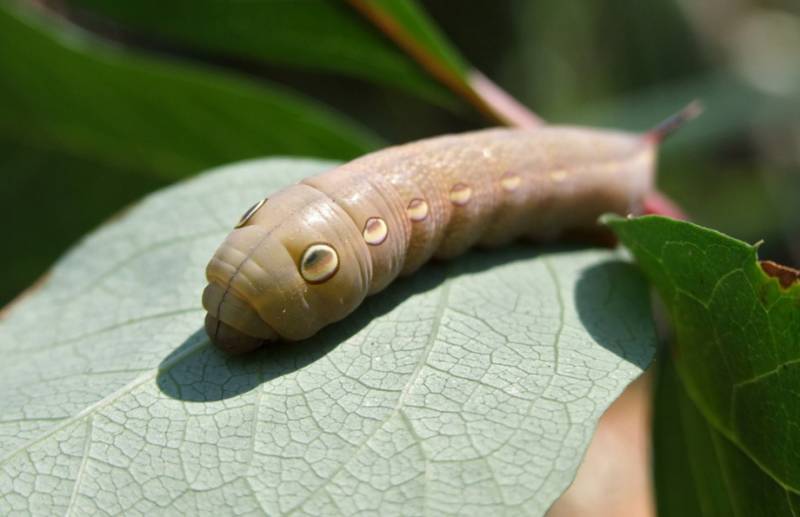
Types of Caterpillars – levant hawk moth. Image: wikipedia.org
The Levant Hawk Moth caterpillar is not colorful, but it is unique for its false eyes. It can be found in South and Southeast Asia. It can also be found in Europe. It feeds on Vitis (grapes) and Parthenocissus species.
12. Six Spot Burnet
12. Six Spot Burneth: 810px" class="wp-caption alignnone">
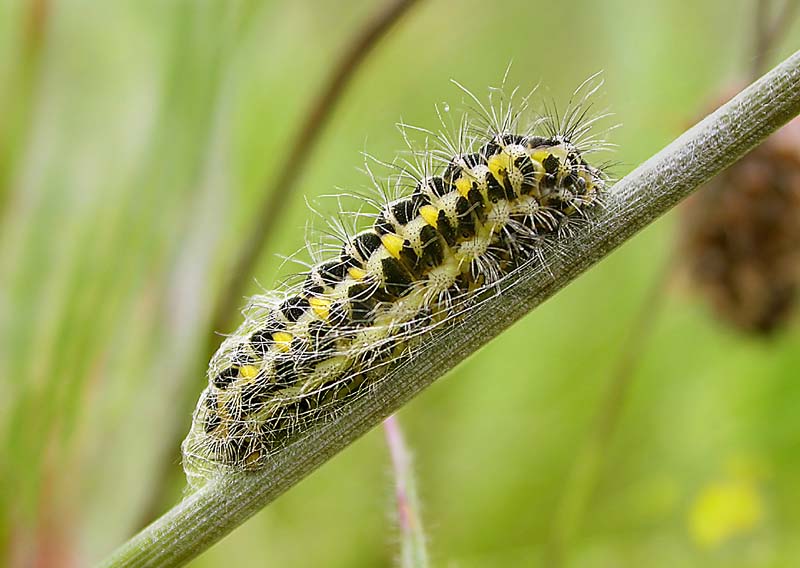
Types of Caterpillars – Six Spot Burnet. image: charlielepidopteraofcalderdale.blogspot.com
This vividly colored but hairy caterpillar is a Six-spot Burnet, a day-flying moth commonly found throughout Europe. I don’t know why they named it ‘six-spot’ when in fact it has more than twenty black spots.
13. Stinging Rose Caterpillar
13. Stinging Rose Caterpillar" class="wp-caption alignnone">
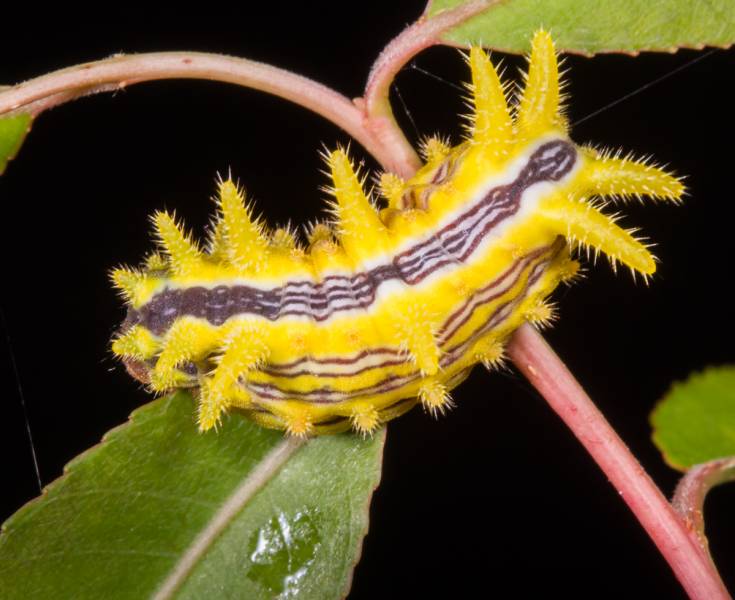
Types of Caterpillars – Stinging Rose Caterpillar. image: roadsendnaturalist.com
Limacodidae or Euclidae is a family of moths in the superfamily Zygaenoidea or the Cossoidea the placement is in dispute. They are often called slug moths because their caterpillars bear a distinct resemblance to slugs. They are also called cup moths because of the shape of their cocoons.
14. Spotted Apatelodes
14. Spotted Apatelodesion alignnone">
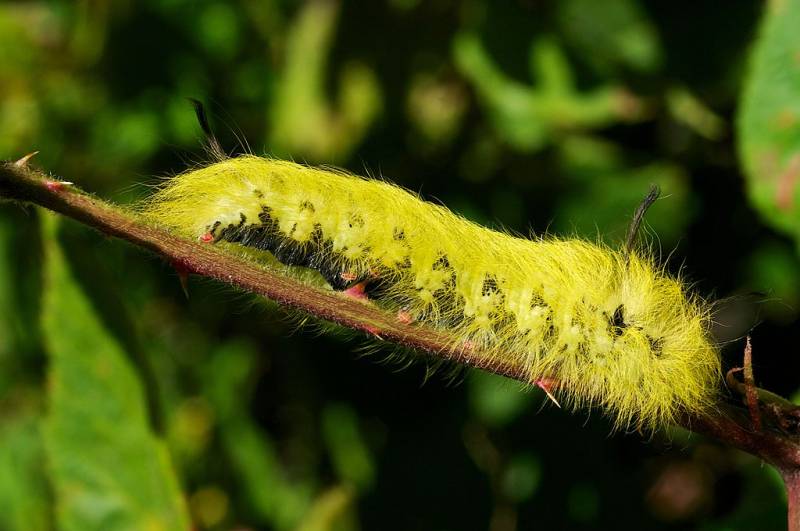
Types of Caterpillars – spotted apatelodes. Image: wikipedia.org
Apatelodes torrefacta, or Spotted Apatelodes, is a species of moth in the Bombycidae or Apatelodidae family. It is found from Maine and southern Ontario to Florida, west to Texas, and north to Wisconsin. The wingspan is 32–42 mm.
15. Saddleback Caterpillar
15. Saddleback Caterpillarn alignnone">
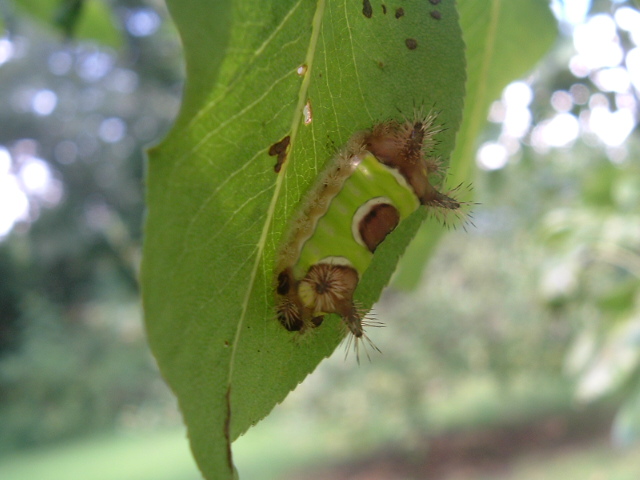
Types of Caterpillars – saddleback caterpillar. Image: wikipedia.org
The saddleback caterpillar, Sibine stimulea, is the larva of a species of moth native to eastern North America. The species belongs to the family of slug caterpillars, Limacodidae. It is also known as the “packsaddle”.
16. Giant Silkworm
16. Giant Silkwormignnone">
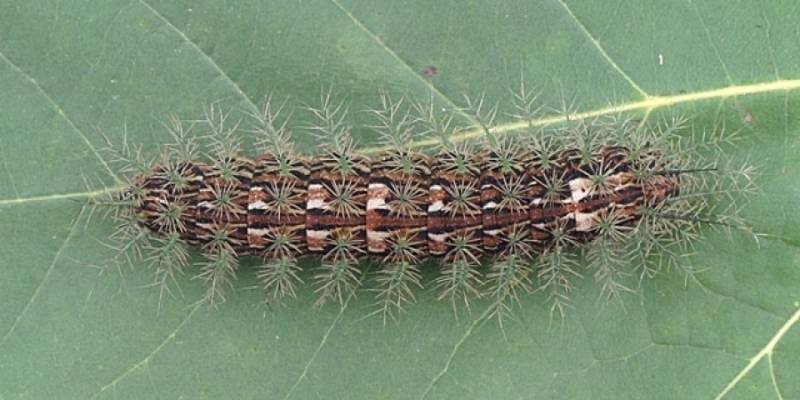
Types of Caterpillars – Giant Silkworm. Image: wikipedia.org
The caterpillars are themselves extremely cryptic, blending in against the bark of trees, where the larvae commonly aggregate. The larvae, like most hemileucines, are covered with urticating hairs, but these caterpillars possess a uniquely potentanticoagulant venom.
17. Christmas Light Caterpillar
17. Christmas Light Caterpillarnone">
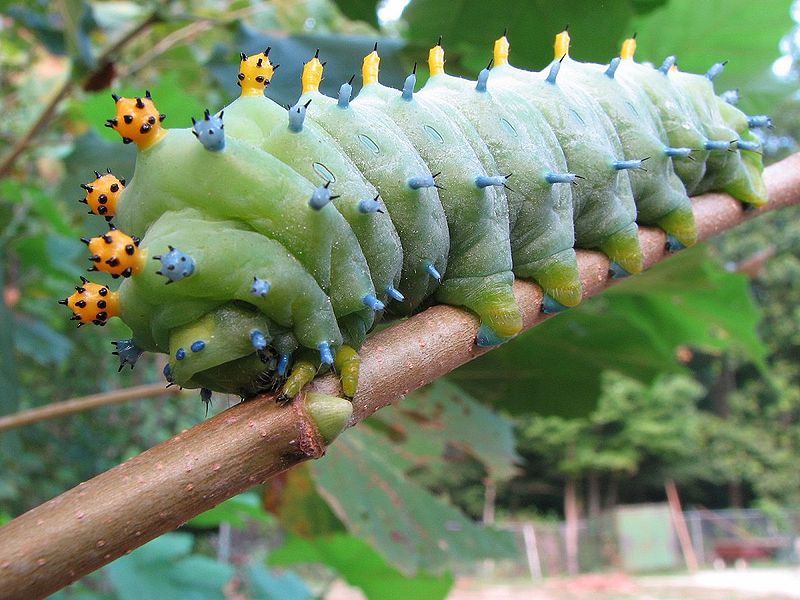
Types of Caterpillars – Christmas Light Caterpillar. Image: wikipedia.org
The Cecropia Moth (Hyalophora cecropia) is North America’s largest native moth. It is a member of the Saturniidae family or giant silk moths. Females with a wingspan of six inches (160 mm) or more have been documented. It is found as far west as the Rocky Mountains and north into the maritime provinces of Canada. The larvae of these moths are most commonly found on maple trees, but they have been known to feed on cherry and birch trees among many others.
18. Nettle Caterpillar
18. Nettle Caterpillar://invorma.com/the-20-kinds-of-unique-caterpillars/nettlecattlepillar/">
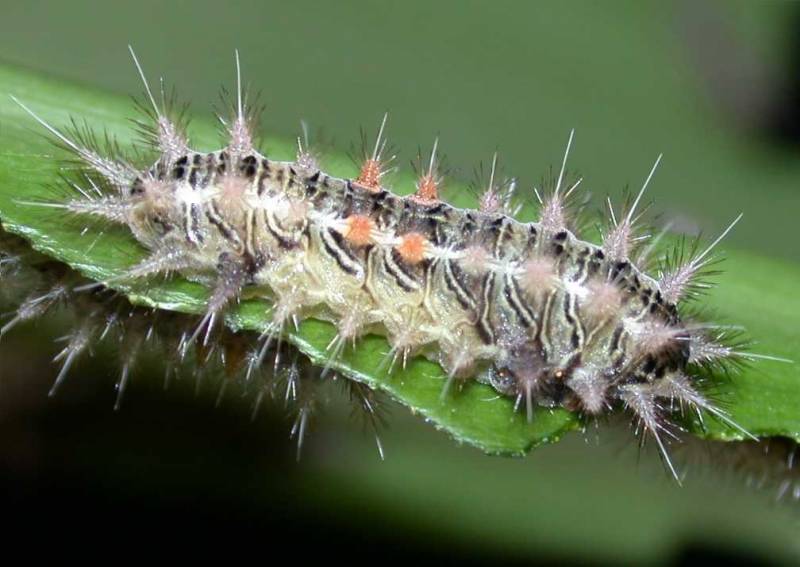
Types of Caterpillars – Nettle Caterpillar. mage: damontucker.com
The Nettle Caterpillar is a moth larva found in South and Southeast Asia. This lovely-looking creature is considered a pest. It feeds on cocoa, coffee, coconut, mango, oil palm, and tea. It is also commonly known as Blue-striped Nettle Grub.
19. Spicebush Swallowtail
19. Spicebush Swallowtailinvorma.com/the-20-kinds-of-unique-caterpillars/spicebush-swallowtail/">
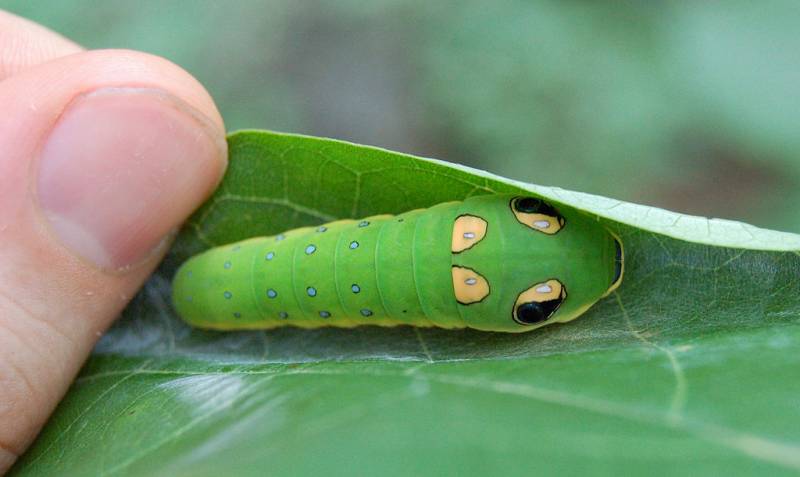
Types of Caterpillars – spicebush swallowtail. Image: wikipedia.org
The Spicebush Swallowtail is a fairly black swallowtail butterfly with unique looking caterpillar characterized by two large false eyes and two smaller eyespots. It can be found in North America and is the state butterfly of Mississippi, US. This caterpillar feeds on the leaves of sassafras and spicebush.
20. Hyles Tithymali
20. Hyles Tithymaliorma.com/the-20-kinds-of-unique-caterpillars/hyles-tithymali-caterpillar/">

Types of Caterpillars – Hyles Tithymali Caterpillar. Image: tpittaway.tripod.com
The caterpillar of the Hyles tithymali, a moth species, is a colorful caterpillar with a horn. It can be found in North Africa, Canary, Islands, Madeira and the Mediterranean. It feeds on Euphorbia.
21. Monarch Caterpillar
21. Monarch Caterpillarorma.com/the-20-kinds-of-unique-caterpillars/q/">

Types of Caterpillars – Monarch Caterpillar. image: flickr.com
This caterpillar is surely cute. Their body color is yellow with black and white stripes. Although they are small but this caterpillar is growing rapidly since the first time they were hatched from the egg.
22. Cinnabar Moth Caterpillar
22. Cinnabar Moth Caterpillarorma.com/the-20-kinds-of-unique-caterpillars/cinnabar-moth-caterpillar-2/">
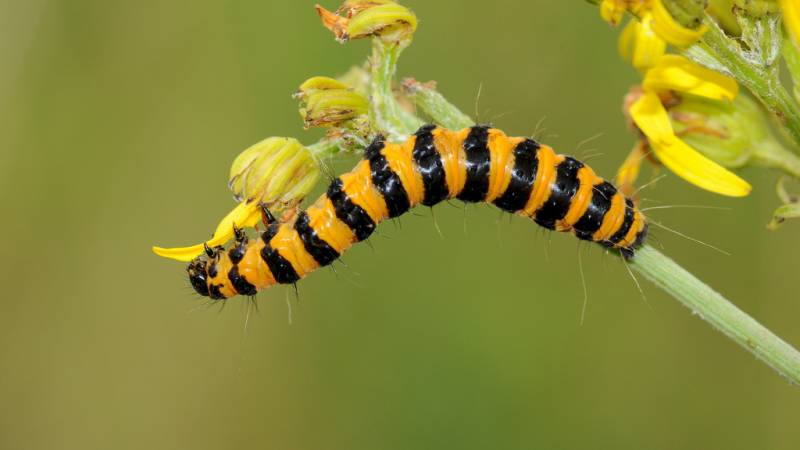
Types of Caterpillars – Cinnabar Moth Caterpillar. image: flickr.com
This species is considered as the greediest caterpillar. If they are running out of food, they will eat their own kind. The Cinnabar Moth Caterpillar is also equipped with deadly venom for its prey. Your body will be itchy if you accidentally touch this caterpillar.
23. The Puss Caterpillar
23. The Puss Caterpillarorma.com/the-20-kinds-of-unique-caterpillars/the-puss-caterpillar/">

Types of Caterpillars – The Puss Caterpillar. image: Our Wild World – WordPress.com
The next weird caterpillar is the Puss Caterpillar. Alright don’t get fooled by its appearance. The fur of this species is really venomous. The symptom of the venom can last for several days including headache, nausea and vomiting.
24. The Gypsy Moth Caterpillar
24. The Gypsy Moth Caterpillarma.com/the-20-kinds-of-unique-caterpillars/the-gypsy-moth-caterpillar-2/">
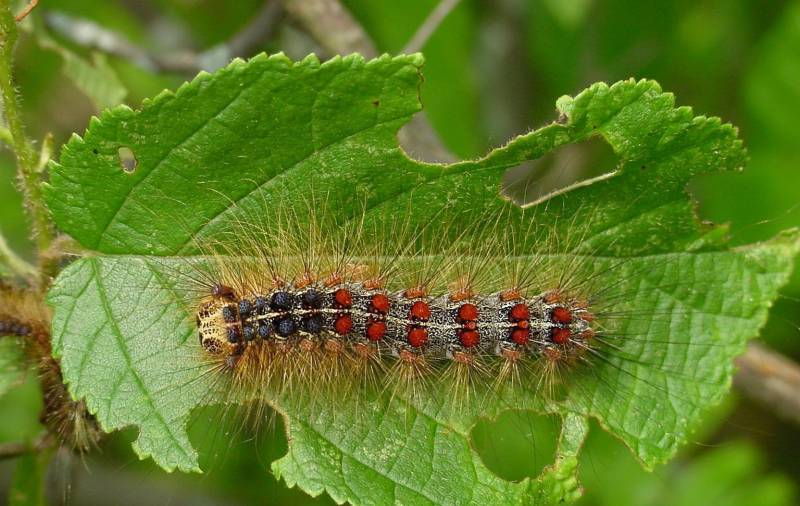
Types of Caterpillars – The Gypsy Moth Caterpillar. image: totallandscapecare.com
This species can be recognized from their hairy head. The hair from this caterpillar is also venomous and they can bring a lot of pain and dermatitis feeling. The Gypsy Moth caterpillar main food is maple, elm and oak leaves.
25. The Bag Shelter Caterpillar
25. The Bag Shelter Caterpillara.com/the-20-kinds-of-unique-caterpillars/the-bag-shelter-caterpillar-2/">
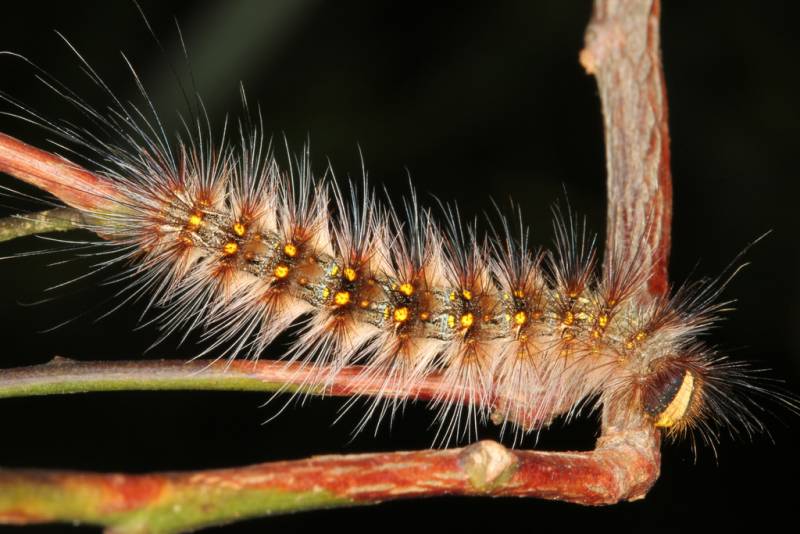
Types of Caterpillars – The Bag Shelter Caterpillar. image: flickr.com
The Bag Shelter Caterpillar is the deadliest and venomous species among the other caterpillar. If you are accidentally touching their hair, you will be hard to breath. This tiny caterpillar is also considered as the nocturnal animal.
26. The Hickory Tussock Caterpillar
26. The Hickory Tussock Caterpillara.com/the-20-kinds-of-unique-caterpillars/the-hickory-tussock-caterpillar-2/">
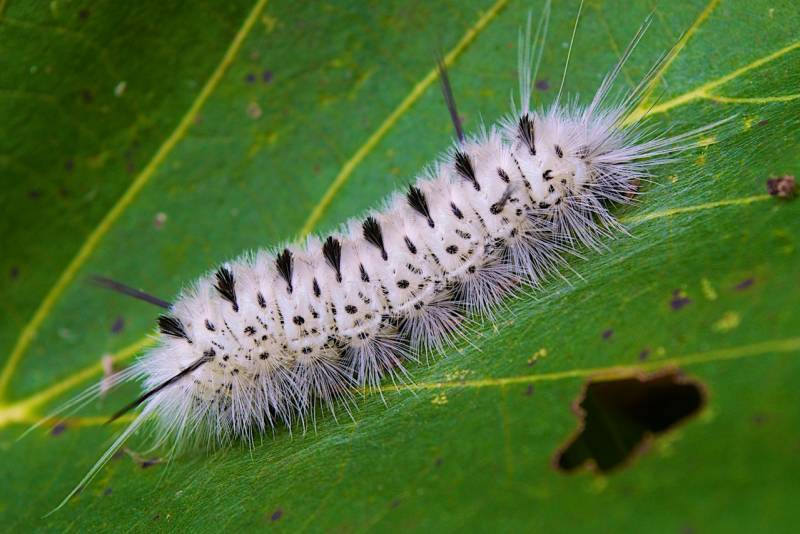
Types of Caterpillars – The Hickory Tussock Caterpillar. image: distanthillgardens.org
The poison from this caterpillar can make you itchy. The Hickory Tussock Caterpillar commonly shown during June until September. This species can be located in the south of Canada or North America.
27. The Io Moth Caterpillar
27. The Io Moth Caterpillara.com/the-20-kinds-of-unique-caterpillars/science-source/">
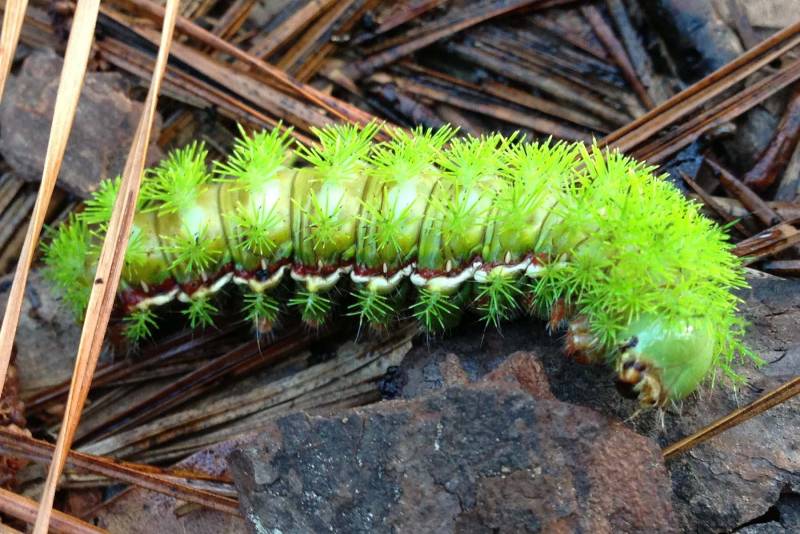
Types of Caterpillars – The Io Moth Caterpillar. image: hipsterbirders.blogspot.com
Two kinds of venom from this species can give you burning and swollen sensation. The Io Moth Caterpillar eats a lot of leaves and bushes including willow, maple, holly, oak, cherry and pear. This species can be found at the savanna, corn field or the jungle.
28. The Spinny Oak Slug Caterpillar
28. The Spinny Oak Slug Caterpillara.com/the-20-kinds-of-unique-caterpillars/the-spinny-oak-slug-caterpillar-2/">
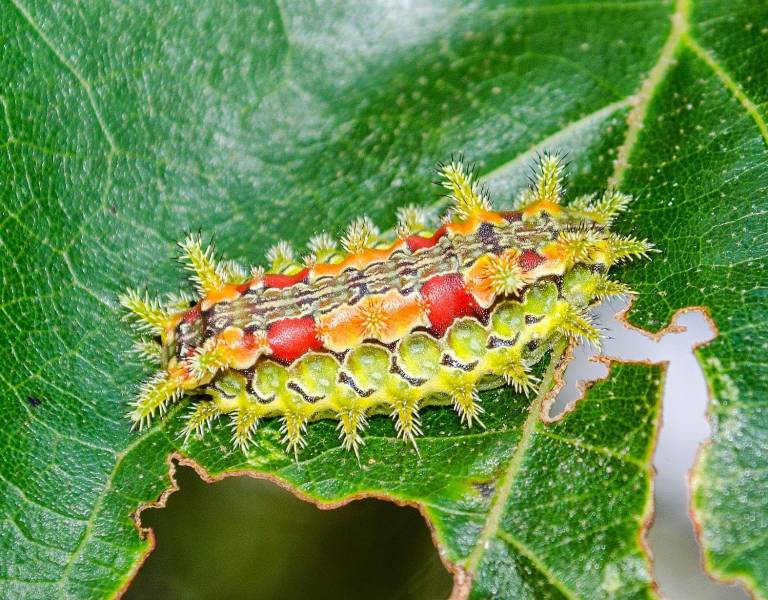
Types of Caterpillars – The Spinny Oak Slug Caterpillar. image: pinterest.co.uk
This caterpillar is surely beautiful in color but wait, this species is venomous as well. The Spinny Oak Slug Caterpillar love to eat various kinds of leaves such as oak, willow and hackberry. The The Spinny Oak Slug Caterpillar can be located in the south part of Quebec Jungle, Texas and Florida.
29. Carnivore Caterpillar
29. Carnivore Caterpillara.com/the-20-kinds-of-unique-caterpillars/carnivore-caterpillar-2/">
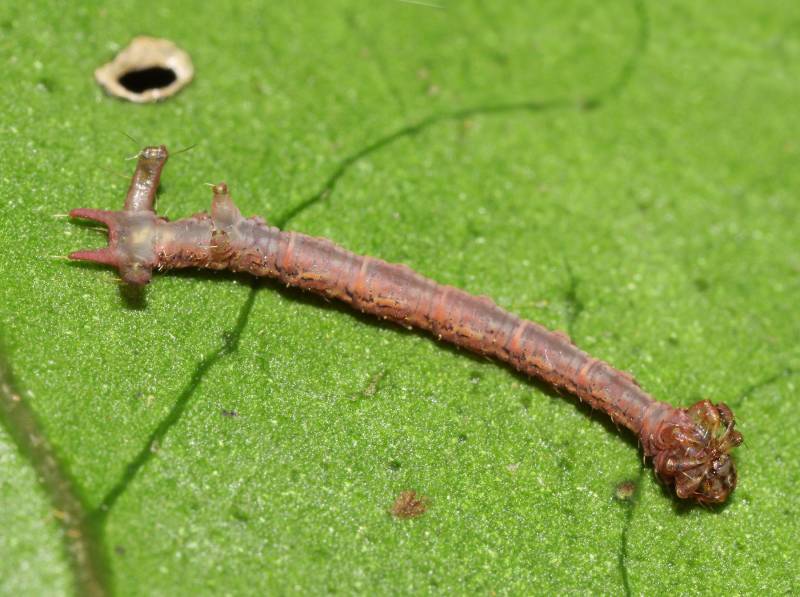
Types of Caterpillars – Carnivore Caterpillar. image: hawaiianforest.com
This species is not a vegetarian but they are greedy carnivores. This caterpillar will eat the other insects and worm. As a carnivore, they are equipped with strong jaw to chew their prey.
30. White Cedar Moth
30. White Cedar Motha.com/the-20-kinds-of-unique-caterpillars/white-cedar-moth-2/">

Types of Caterpillars – White Cedar Moth. image: scienceimage.csiro.au
This species can be located in entire Australia exclude Tasmania. The shape of White Cedar Moth is similar with tiny cactus and they are the master of crawling. This species is also a greedy herbivore. They will attack one of the trees and eat all of the leaves until nothing is left anymore.
31. Convict Caterpillar
31. Convict Caterpillara.com/the-20-kinds-of-unique-caterpillars/convict-caterpillar/">
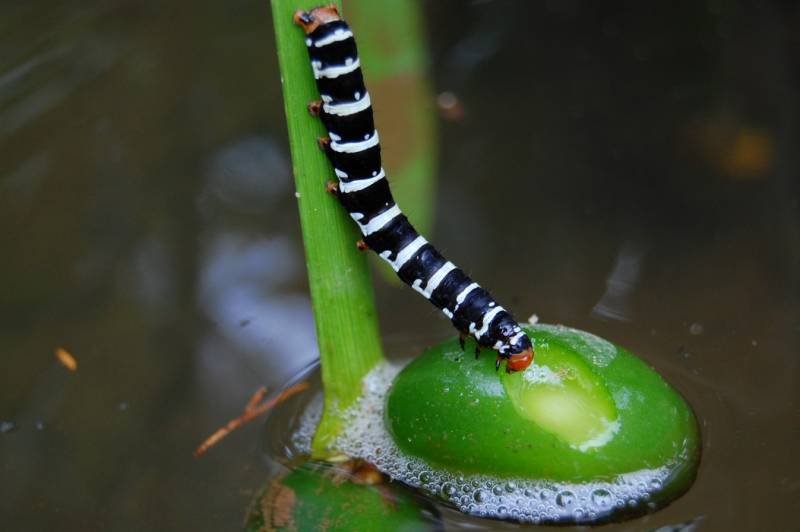
Types of Caterpillars – Convict Caterpillar. image: vanzandtlab – WordPress.com
Convict caterpillar also known as Spanish moth is characterized by bold stripes of black and white. At a glance, it looks like Costa Rica Sphinx caterpillar. The species is widely spread across Central and South America inhabiting the tropical lowland areas. To befuddle its predator, it uses his orange head obtainable at both ends. As a matter of fact, this crawling guy is the main enemy of flower farmers. How does it come? Yes, it frequently gobbles both amaryllis and lilies.
32. Frangipani Hornworm
32. Frangipani Hornworma.com/the-20-kinds-of-unique-caterpillars/frangipani-hornworm/">
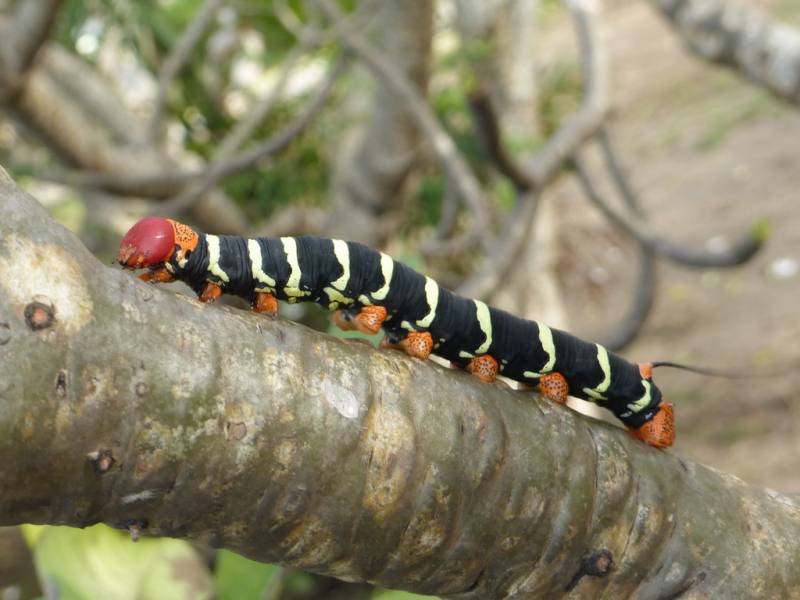
Types of Caterpillars – Frangipani Hornworm. image: flickr.com
Frangipani hornworm is one of the thought-provoking types of caterpillars generally found in frangipani trees or Apocynaceae plants. Instead of being affected by the toxins produced by the shrub, it greatly benefits them for the defense reason, specifically when the predator is about to attack the larva. Visually, it goes with thick, black and white stripes and rounded, dark red legs, making the hunters think that the hornworm is distasteful. The natural habitat of it is the tropical areas of America.
33. Goat Moth Caterpillar
33. Goat Moth Caterpillara.com/the-20-kinds-of-unique-caterpillars/goat-moth-caterpillar/">
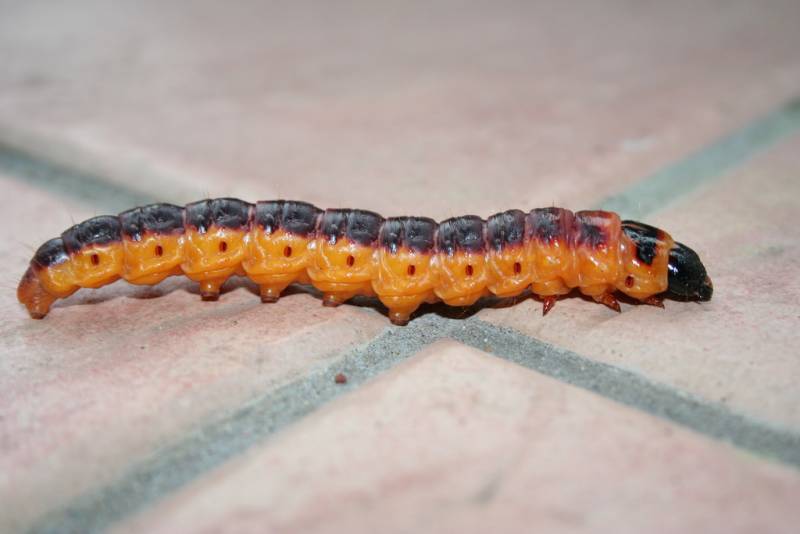
Types of Caterpillars – Goat Moth Caterpillar. image: flickr.com
The notable description of this sort of worm is its darkish red color on upperparts and pink on both sides. Along the period in a year, it spends the rest of its life inside a tree, burrowing the trunk as well as enjoying feeding on wood. Even it can linger in the plant for up to five years – that’s truly an interesting fact. However, when the summer comes, the goat moth caterpillars wander around people’s yard to pupate. In addition to the truth, the caterpillar produces frass (a type of waste) while munching on.
34. Hag Moth Caterpillar
34. Hag Moth Caterpillarthe-20-kinds-of-unique-caterpillars/hag-moth-caterpillar/">

Types of Caterpillars – Hag Moth Caterpillar. image: pinterest.ca
Hag moth caterpillar comes with a unique name, monkey slug. Why it’s called so since it has six hairy, light brown projections coming out from its curling body. The hairs on it, at first sight, looks like what the monkey has. Are they stingy? The answer is definitely not. A scientist has proven that it doesn’t affect the human’s skin except to those who are sensitive. If other caterpillar crawls fast, this one is on the contrary. It moves like a slug.
35. Pine Processionary Caterpillar
35. Pine Processionary Caterpillar-kinds-of-unique-caterpillars/pine-processionary-caterpillar/">
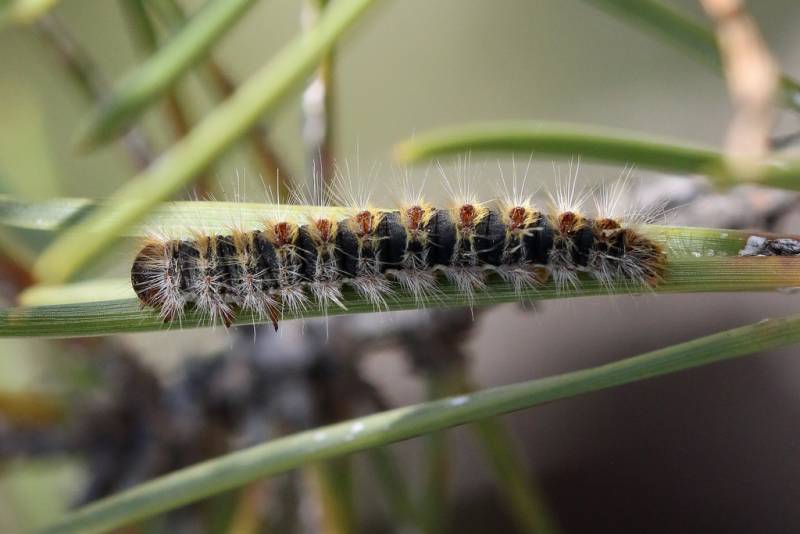
Types of Caterpillars – Pine Processionary Caterpillar. image: flickr.com
Speaking of cool types of caterpillars, the pine processionary caterpillar should come with no exception. It gains the people’s attention due to the creature’s harpoon-shaped hairs, able to produce venom irritating human’s skin. It’s spread across the warm Mediterranean region. When the chilly air hits in the winter, the insect makes a colony with its peers then builds an amazing nest and spins the silk-look thread. However, the presence of processionary is actually destructive to some plants especially the pine.
36. Luna Moth Caterpillar
36. Luna Moth Caterpillarf-unique-caterpillars/luna-moth-caterpillar/">
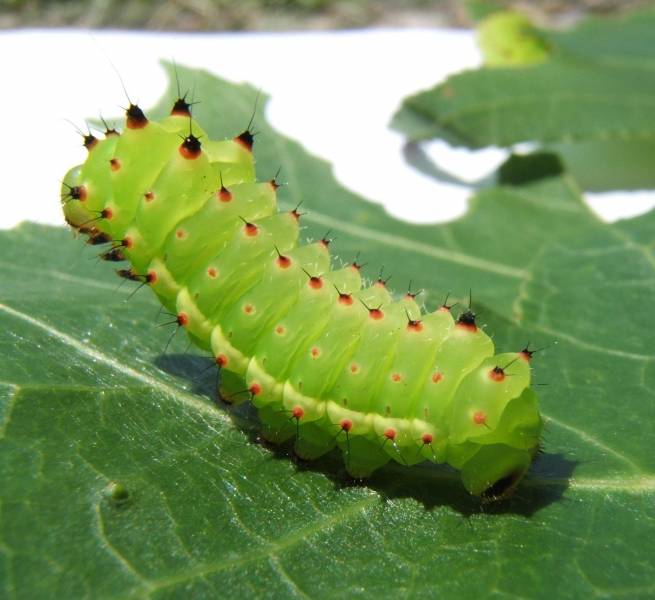
Types of Caterpillars – Luna Moth Caterpillar. image: zh.wikipedia.org
Luna moth caterpillar, mostly found in North America, has an attractive appearance. The body is covered with vivid lime green color that looks flashy and subtle whitish hairs. It is also dotted with some red spots making it enchanting. In nature, most out of the insects populate a deciduous forest. When it comes to favorite diets, the caterpillar loves eating the leaves of birch, willow, walnut, and not to mention hickory. The young ones tend to stay close to their friend. Once growing bigger, they choose to have a solitary life.
37. Pine Devil Caterpillar
37. Pine Devil Caterpillarf-unique-caterpillars/pine-devil-caterpillar/">
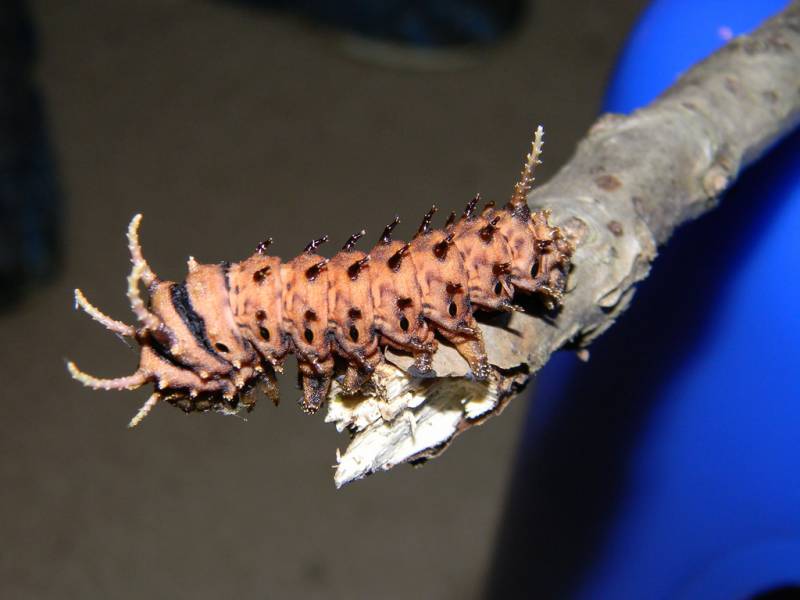
Types of Caterpillars – Pine Devil Caterpillar. image: flickr.com
Pine Devil caterpillar, as a matter of fact, is the close relative of the mesmerizing variety called Hickory Horned Devil. It is characterized by a chocolate-colored abdomen that is long and dense. From a distance, the surface of its body looks rough. In the States, the adorable crawling creature is found across Florida, North Carolina, and Kentucky. When other pupas are laid on the leaves or plant’s stems, these one are set on the ground. Dealing with foods, the pine devil munches on the pine’s leaves a lot.
38. Oleander Caterpillar
38. Oleander Caterpillarique-caterpillars/oleander-caterpillar/">
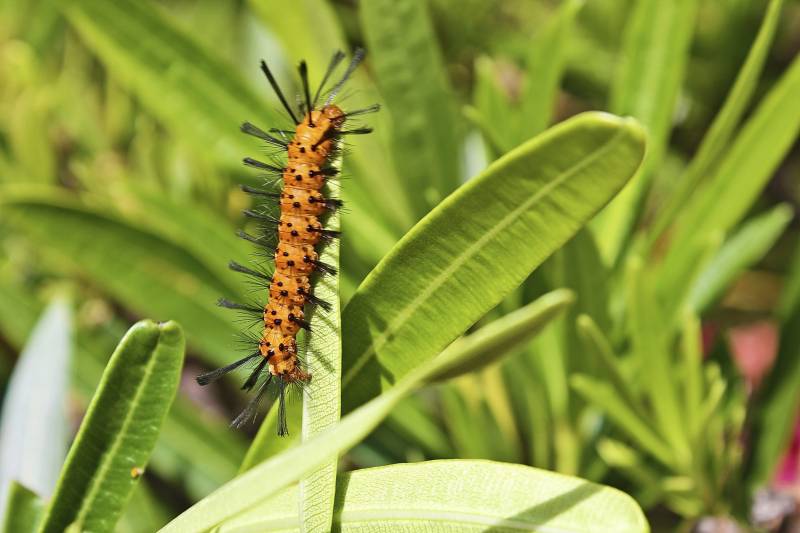
Types of Caterpillars – Oleander Caterpillar. image: gardeningknowhow.com
A bright orange body covered by long black hairs is the characteristic of Oleander caterpillar. This beautiful hairy insect is often noticed in the southern States like Florida and Georgia as well as the Caribbean region. The average length of the larva ranges from 3 to 22 millimeters. When a human holds the creature, the person will not get any irritation as the hairs don’t generate pain. It usually lives solitary and eats the whole leave. Meanwhile, the eggs have spherical form and light yellow shade.
39. Black Spiky Caterpillar
39. Black Spiky Caterpillarue-caterpillars/black-spiky-caterpillar/">
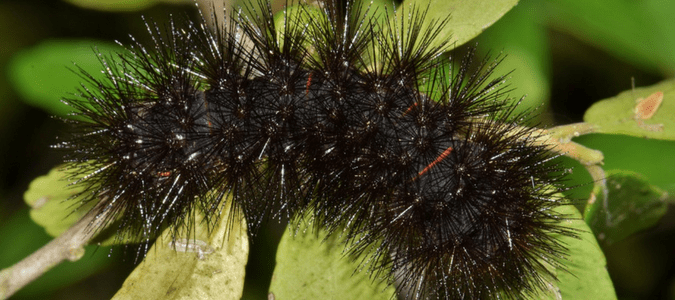
Types of Caterpillars – Black Spiky Caterpillar. image: abchomeandcommercial.com
One of the fuzzy types of caterpillars that, is one of a kind is nothing else but this guy – black spiky caterpillar. Glossy jet-black hairs cloud the body and decorated by the red stripes. Some might keep it away and think that it’s deadly. However, that’s totally untrue. It also has an exceptional nickname, the woolly bear. When it’s young, the color is somewhat brown, and the body has rare bands. In the future, this prickly creature will turn into an elegant giant leopard moth.
Related
Related
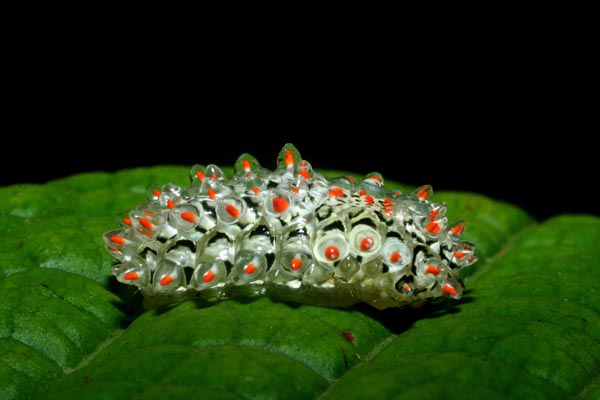
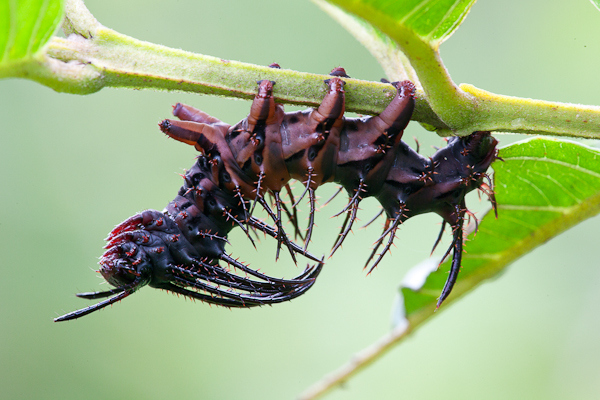
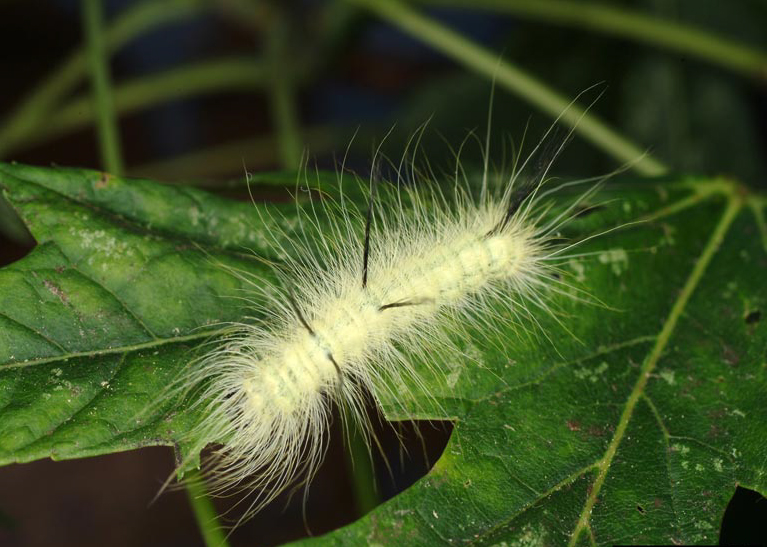
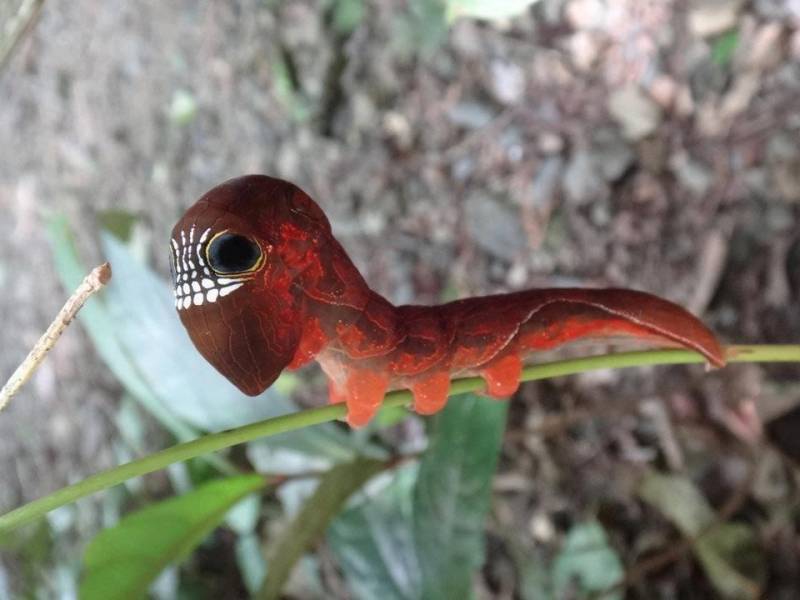
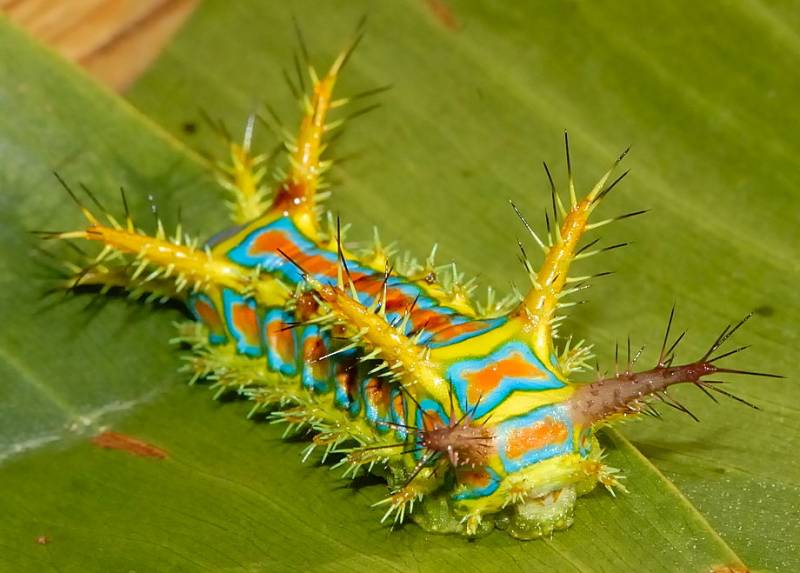

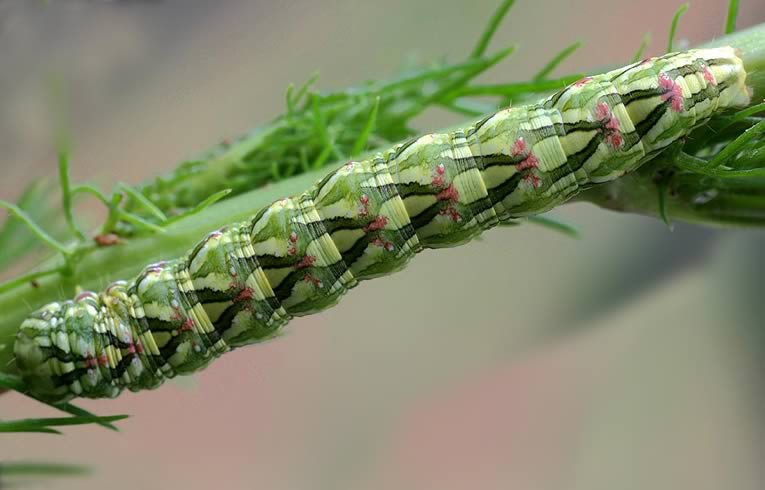
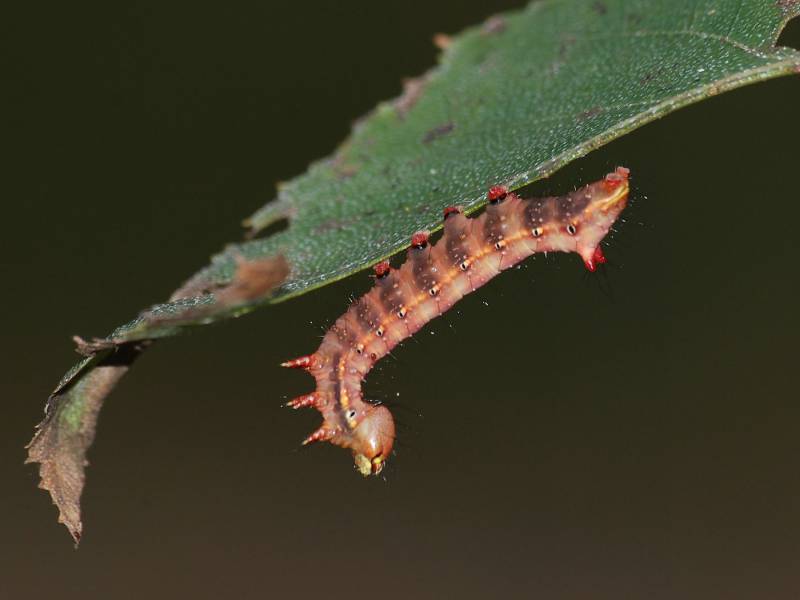































Hey. I think that first one may actually be a young hickory horned devil. Looks a lot like the gulf fritillary when they’re young. They change color when they get older.
I just saw a caterpillar I do not know wether it is caterpillar or something else can I post photo of that